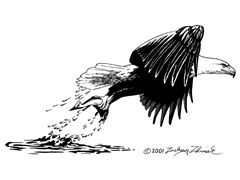Extension Wildlife & Fisheries Specialists Conferences

Triennial National Wildlife and Fisheries Extension Specialists Conference: 11th (2006)
Date of this Version
10-14-2006
Document Type
Article
Abstract
As long linear ecosystems, rivers and streams are particularly vulnerable to fragmentation. There is growing concern about the role of road crossings – and especially culverts – in altering habitats and disrupting river and stream continuity. The River and Stream Continuity Project began in the year 2000 with a startup grant from the Massachusetts Watershed Initiative. The University of Massachusetts took the lead in convening a group of people from a variety of agencies and organizations who were concerned about the impact of road-stream crossings on fish and other aquatic organism passage. Since its beginning, the River and Stream Continuity Project has:
• Developed “Massachusetts River and Stream Crossing Standards” to facilitate river and stream continuity as well as fish and wildlife passage. These standards are referenced in federal and state regulations and policies affecting road-stream crossings.
• Created a field protocol for volunteer assessment of road-stream crossings, including data forms, instructions, and training materials.
• Developed a system for scoring crossing structures for their effects on river and stream continuity and aquatic organism passage based on volunteer assessments.
• Created an online database for data on road-stream crossings collected by volunteers. All crossings are geo-referenced and information from the database can be easily used in a GIS to depict the location and score of all assessed structures in participating states.
• Developed a statewide GIS coverage prioritizing all mapped stream segments in Massachusetts into three categories based on information about their importance for fish and wildlife.
• Conducted volunteer assessments of road-stream crossings in Massachusetts, Connecticut, Rhode Island, Vermont and New Hampshire.
• Initiated demonstration projects to mitigate known barriers to aquatic organism passage on high-priority streams.
• Developed workshops, presentations and other educational material on the subject of river and stream continuity and the Massachusetts River and Stream Crossing Standards.


Comments
Published in Proceedings, 11th Triennial National Wildlife & Fisheries Extension Specialists Conference, October 14-18, 2006, Big Sky, MT.